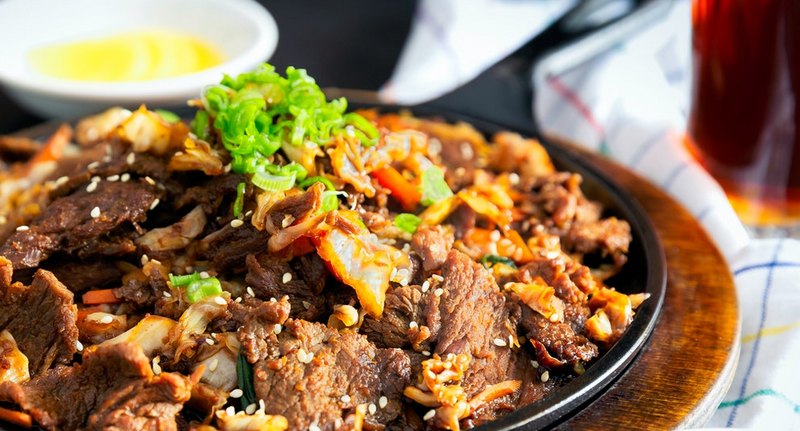Beef stew is usually simmered on a stove in a very big pot filled with broth, beef tips, celery, potatoes, carrots, and so many other things. The aroma that comes from it alone is delicious and you will likely be unable to control your cravings for it. For just one meal, a dish of beef stew has everything your body will need. It contains plenty of veggies and protein.
Most times, you will always have leftovers after cooking the pot of your stew, there is always no other choice. What can you do to this leftover? Perhaps you can reheat it. Will it even freeze and defrost before reheating? Beef stew can be stored and reheated very well. Your extras or leftovers can be stored and then reheated when you need them. Beef stew can be stored inside a refrigerator for some days while it will also store inside the freezer which you can reheat later.
You have different options you can use to reheat your leftover stew instead of wasting it. You should continue reading to get all we have in place for you regarding how you can store and then reheat beef stew.
Storing and Reheating the Best Beef Stew
Whenever you wish to have a meal to help you warm from your inside, most especially in the winter or fall, the beef stew will go a long way to help you. The good thing about beef stew is that it is quite simple to cook. You have different options to store your leftovers and reheat them safely. You can also easily freeze it on days when the leftovers are so much.
Contained in the beef stew are round roast pieces or beef tips and lots of veggies. It is great for filling. Your vegetable and protein servings for a day can be gotten from just one bowl of warm beef stew. It can even be made in advance and then frozen to be used later by using top quality storage containers that will help you to get it easily reheated.
It is nearly impossible to make only a little serving of beef stew because it stretches a bit farther than imagined. You will most times be left with more beef stew than can be consumed at once. You are likely to be left with more than enough for two to four meals depending on the serving sizes and the size of your family.
This stew is relatively not an expensive meal to cook and it is quite versatile because even though some vegetables are specifically recommended, you are also allowed to use any vegetable of your choice. This will help you to personalize the taste to whatever you can get your hands on.
You will always need to understand how you should store and then reheat beef stew because there will always be leftovers. We will begin by checking out some pros and cons of reheating beef stew, check them below:
The Upsides (pros) of Reheating Beef Stew
- The stew has rich nutrition and when reheated, you will get a quick meal.
- Once you have stored and then reheated it, the whole flavor will improve because the vegetables and spices will be able to become intensified in the flavor.
- You can reheat it in the crockpot, a microwave, or on a stove.
- You can make the stew ahead, freeze it, and reheat it well.
- You can save your leftovers without wasting them.
The Downsides (cons) of Reheating Beef Stew
- The potatoes can become mushy and soft from reheating.
- The grease and fat of your stew may thicken at the top or likely separate from your stew mixture. This is easily removable as you reheat.
- The thickening agent might separate if you freeze the stew. If you want to make in advance, leave the thickening agent out until you want to heat the stew.
- When you want to reheat, only take the amount you can use, reheating your stew in multiple times will lead to taste burn or loss of flavor.
You have now known the basic upsides and downsides of reheating beef stew, it is good to dive fully into it and check out how you can store beef stew as well as the best reheating methods for the beef stew. What we have is a guide that contains instructions to help you reheat beef stew so that you will find the process to store and reheat very easy and simple. The hope is that the guide will be helpful whenever you need to reheat beef stew in the stew and soup season.
Detailed Guide to Reheating Beef Stew
There are no challenges involved in reheating beef stew. It could consume a bit of time because the best method to reheat the beef stew could take some time for cooking. However, you have several options for any time frame of your choice.
You can easily creak beef stew or make it in advance, it is perfect for winter and fall. It is easy to store leftovers of beef stew and then reheat in the future when you want to use it. You have to watch out for the cooking and thickening tips. Cooking should be done slowly to prevent the stew from burning or losing flavor.

How to Store your Beef Stew
The first thing you need to know is that if you have not stored beef stew properly, there is no way you can reheat it. Beef stew can be stored for some days or frozen for some months. You are not recommended to reheat beef stew more than once. The stew should be reheated correctly, so take your time. It should also be stored correctly so that you will not be disappointed with how it will turn out.
- Already made beef stew must first be allowed to become completely cool. Put it inside a sealable container that is perfect for refrigerating and freezing or tightly cover it and put it inside the fridge. The stew can be stored like this between three and five days.
- The leftover stew should be stored inside the freezer. Put it inside your plastic container or freezer bag that will be well sealed. The stew can stay fresh inside your freezer for about 6 months.
- You should make your beef stew in advance and freeze to be used in the future. Do not add your thickening agents or potatoes until when you will prepare and serve it.
How to Reheat your Beef Stew
Irrespective of how you have stored your beef stew, whether frozen or refrigerated, you can use the same steps to simply reheat your beef stew in the crockpot, a microwave, or on a stovetop.
- Crockpot
This method is very useful when you don’t want to deal with the mess from a stove or microwave. Put the stew inside your crockpot. Put the settings on low and ensure you have a lot of moisture inside the stew to avoid burning. Add broth or water as necessary. Endeavor to stir your stew occasionally as it reheats. This is the best thing to do. The stew can be warmed inside the crockpot for 2 to 3 hours on low.
- Stovetop
Put your stew inside a pot and put it under low temperature. Some water or broth can be added for appropriate moisture to be added to the stew. Allow the stew to simmer until it is warm, ensuring you stir often. The whole process of reheating the stew will be done between 15 and 20 minutes. Ensure you do not overcook it.
- Microwave
You should use a microwavable dish that has a lid. Put your stew for three minutes inside the microwave, stir it every one minute. You need to stir your stew through the process of heating to allow it to evenly heat instead of neglecting some areas. This will prevent some areas from being undercooked.
You could allow the stew to defrost if it is being pulled out from your freezer. Ensure the potatoes and thickening agents are added when you want to reheat the meal instead of reheating their leftovers. Your stew can also be reheated in your casserole dish in an oven but it will be made less soupy. If you follow these methods and steps, you will get to best reheat your stew. Any method you prefer will work out for you, you just need to follow the process properly.
Related Questions
Is One Method Better than the Other for Reheating?
Simmering beef stew on a stovetop is our recommended method to reheat it because it will bring out the best flavors. However, you can consider the microwave as the second in rank while a crockpot could be convenient but the stew will likely lose the flavor or burn.
How Do I Prevent the Stew From Forming a Layer of Grease or Fat?
You are likely not going to have the opportunity to prevent the layer of fat or grease from developing in the stew when you reheat it as a result of some certain properties exhibited by the stew. However, the substance could be allowed to be risen on top and removed from the stew as you reheat and eat.


